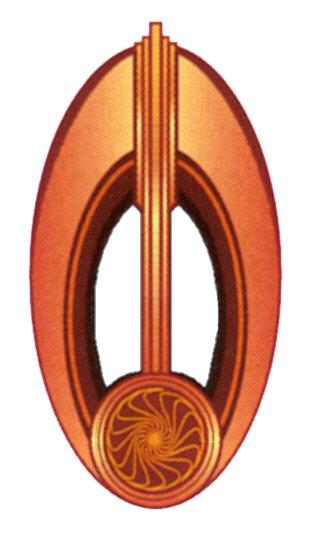Bajoran Resistance
The Bajoran Resistance was a global terrorist movement on Bajor during the Cardassian occupation. Though there was no resistance initially to the Cardassians when they arrived in 2328, years of slavery, torture, and oppression led many Bajorans to fight back against their occupiers. The resistance movement had been formed by 2333, and began guerrilla attacks. The Resistance constantly raided and sabotaged Cardassian targets, and were eventually successful in regaining the independence of Bajor in 2369, when the Cardassians were forced to withdraw. With Bajor and its people free, many resistance members returned to normal lives on Bajor, while others joined the reestablished Bajoran Militia.
Formation
When the Cardassians officially occupied Bajor in 2328, there was no resistance from the Bajoran people. They were unaware that their oppressors would soon turn them into forced laborers, and commit genocide against them. After decades of oppression from the Cardassian military, the once-peaceful Bajorans began to form the resistance, with the hope that they would one day achieve independence.
Tactics
Realizing that a direct confrontation with the Cardassian forces would ultimately result in failure, the resistance used guerrilla tactics to cause both disarray and fear throughout the Cardassian occupying troops. The resistance had managed to create a few light raider vessels to use against Cardassian warships. While these ships were severely weaker than the Cardassians,' their true purpose was to annoy the Cardassians. The resistance often attacked Cardassian targets, even if they contained "innocent" Cardassian civilians. The Bajorans believed that Cardassians living on Bajor as civilians were as guilty as those in the military.
The Bajoran Resistance was divided into cells, which were generally made up of approximately ten to twenty resistance fighters. These cells had their own area of operations, and complete autonomy in what and when to attack a target. Due to this decentralized structure, it was very difficult for Cardassian forces to find the resistance as a whole and destroy it. Another advantage of this cell structure was that, if resistance fighters were captured, they could not compromise the security of the entire resistance. Each cell was named after their leader.
Cardassian Response
As the attacks from the resistance increased in size and frequency, the assigned Cardassian Prefect of Bajor was forced to crack down on the Bajoran people, in hopes of ultimately quelling the resistance. Each time an act of "terrorism" was committed against the Cardassians, the Cardassian military would respond by rounding up suspected resistance members, and executing them publicly, and without a trial. This only infuriated the Bajoran people more, causing the Resistance to grow in size.
In 2359, the newly appointed Prefect attempted a softer approach, believing it was the only way to make the Resistance stop its attacks. The first act was to cut labor camp output quotas by fifty percent, abolish child labor, and improve medical care and food rations. These measures led to a twenty-percent drop in the camp death rates. On his one-month anniversary as prefect of Bajor, the Bajoran Resistance destroyed an orbital drydock, resulting in the deaths of 200 Cardassians. In response, the Prefect rounded up 200 suspected members of the resistance, and had them executed, believing this to be a "fair" response. The Resistance made five assassination attempts against this particular Prefect, all of which failed.
Occupation's End
Despite all of Central Command's attempts to rectify things, the situation on Bajor grew out of hand. After decades of the Resistance's guerrilla and terrorist attacks, as well as political pressure from the United Federation of Planets, the Cardassian Central Command was ordered to withdraw from Bajor by the civilian government on Cardassia Prime.
After the Occupation of Bajor ended, resistance members had to adapt to normal life. Some of them went to be farmers, and others were offered positions in the Bajoran Provisional Government or Bajoran Militia.
